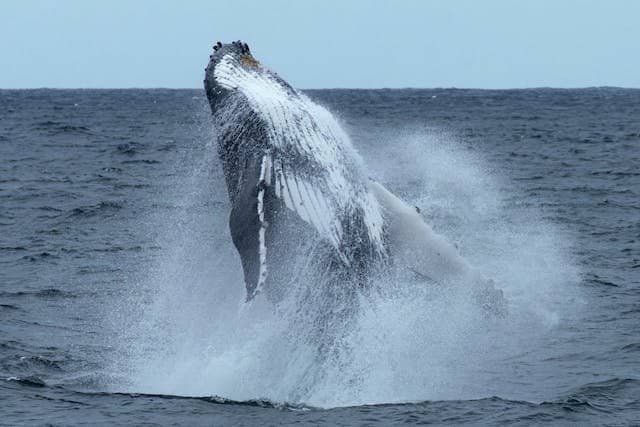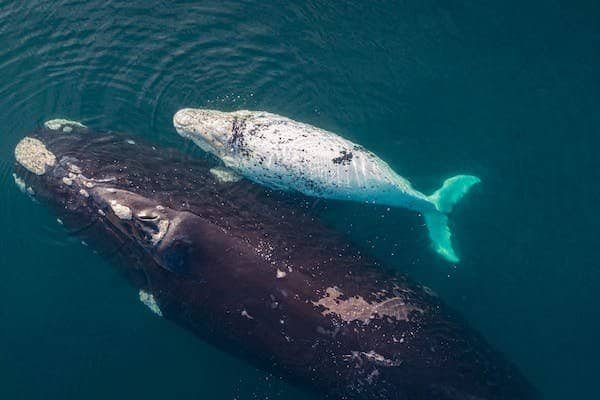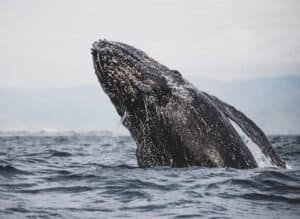Have you ever wondered How Many Humpback Whales Are Left In World? According to the International Union for Conservation of Nature (IUCN), there are currently believed to be around 80,000 humpback whales left in the world. This may seem like a large number, but it is actually only about a quarter of their original population before they were hunted to near extinction.
Before 1960, data about how many humpback whales were left in the world at that time was fearsome. Humpback whales are considered endangered and have been protected by various laws and conservation efforts since the 1960s. Despite these efforts, they still face numerous threats.
Table of Contents
Reasons for the decline in humpback whale population:
One of the main reasons for the decline in humpback whale populations was due to commercial whaling. These creatures were heavily targeted for their blubber, meat, and other valuable body parts. It is estimated that between 1900 and 1971, over 200,000 humpback whales were killed.
Entanglement in fishing gear is a major problem for humpback whales. They often become caught in nets and can suffocate or drown.
Another growing concern for humpback whales is ship strikes. As shipping lanes continue to expand, there has been an increase in collisions between ships and whales. These accidents can cause serious injuries or death to the whales.
Pollution also poses a threat to humpback whales. Chemicals and plastics in the ocean can be ingested by these creatures, causing harm to their health and reproductive systems.
Importance of humpback whales:

Humpback whales are named for the distinctive hump on their backs. Humpback whales play a vital role in ocean ecosystems. As filter feeders, they help to maintain the balance of marine food chains by consuming large amounts of krill and small fish.
They also contribute to nutrient recycling as their fecal matter provides nutrients for other marine species.
Furthermore, humpback whales are considered cultural icons and hold significant spiritual and cultural importance for many indigenous communities. Their songs and long-distance migrations are also objects of curiosity and wonder for people around the world.
Habitat of humpback whales:
Humpback whales can be found in all major oceans and many of their seas. They migrate between feeding grounds near the poles and breeding grounds closer to the equator. During the breeding season, male humpback whales are known for their complex and beautiful songs that they use to attract females.
Behavior And Ecology:

Except for mothers and calves, humpback whale groups usually only survive a few days or weeks. Though enormous aggregations can occur during eating and among males fighting for females, they are typically seen in tiny groups.
Other cetacean species, including bottlenose dolphins, right whales, and fin whales may interact with humpbacks. At the surface, humpbacks engage in a variety of airborne behaviors including breaching and surface slapping with their tails and flippers.
These could be ways to communicate and play, or they could be ways to get rid of parasites.
At the surface, humpbacks lie with their bodies horizontally. Compared to other rorquals, this species swims more slowly, moving between 7.9 and 15.1 km/h (4.9 and 9.4 mph). When in danger, humpbacks can reach speeds of up to 27 km/h.
Lifespan Of Humpback Whales:
Humpback whales have a lifespan of approximately 40-50 years. However, some have been known to live up to 80 years in the wild. This long lifespan also contributes to their slow reproductive rate, making it even more crucial to protect and conserve this species.
Today How Many Humpback Whales Are Left In World?
Thanks to global conservation efforts including the Endangered Species Act, the current population has rebounded to nearly 80,000 Humpback whales up from a low-point of 10,000 to 15,000.

Conservation efforts:
To protect humpback whales, various conservation efforts have been put in place.
- These include laws and regulations to limit hunting and protect their habitats.
- Organizations like the IUCN work to monitor and track humpback whale populations and address threats such as entanglement and pollution.
- Fortunately, a ban on commercial whaling in the late 1960s has allowed humpback whale populations to recover slowly. However, they are still facing challenges.
- Another important aspect of conservation is education and raising awareness about the importance of humpback whales and the threats they face. By educating the public, we can all work together to protect these magnificent creatures for future generations.
- Responsible whale watching has become a popular ecotourism activity in many areas where humpback whales are found. This not only provides economic benefits to local communities but also promotes conservation by allowing people to observe and appreciate these animals in their natural habitat without causing harm.
Conclusion:
There are about 80,000 Humpback Whales are left in the world, this number seems like a huge population but it’ s not that population that were in the past. So this is one of the species in the list of endangered specie on our planet.
Alot of the humpback whale’s species were decline by the human activities and it is up to us to take responsibility and make changes before it’s too late.
We must continue efforts to protect these majestic creatures and their habitat if we want future generations to be able to witness the beauty and power of the Humpback Whales.
Read Also: How To Prevent Ear Infections In Dogs?





